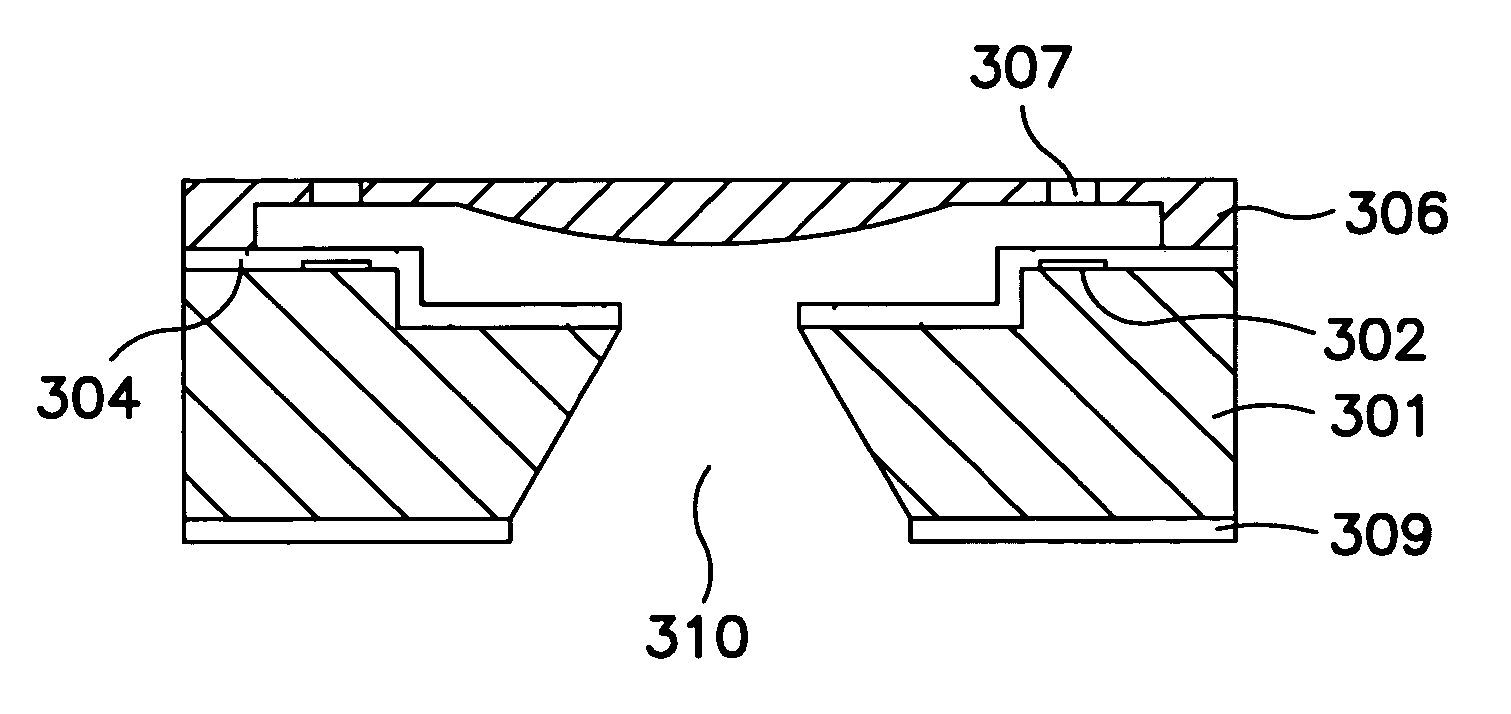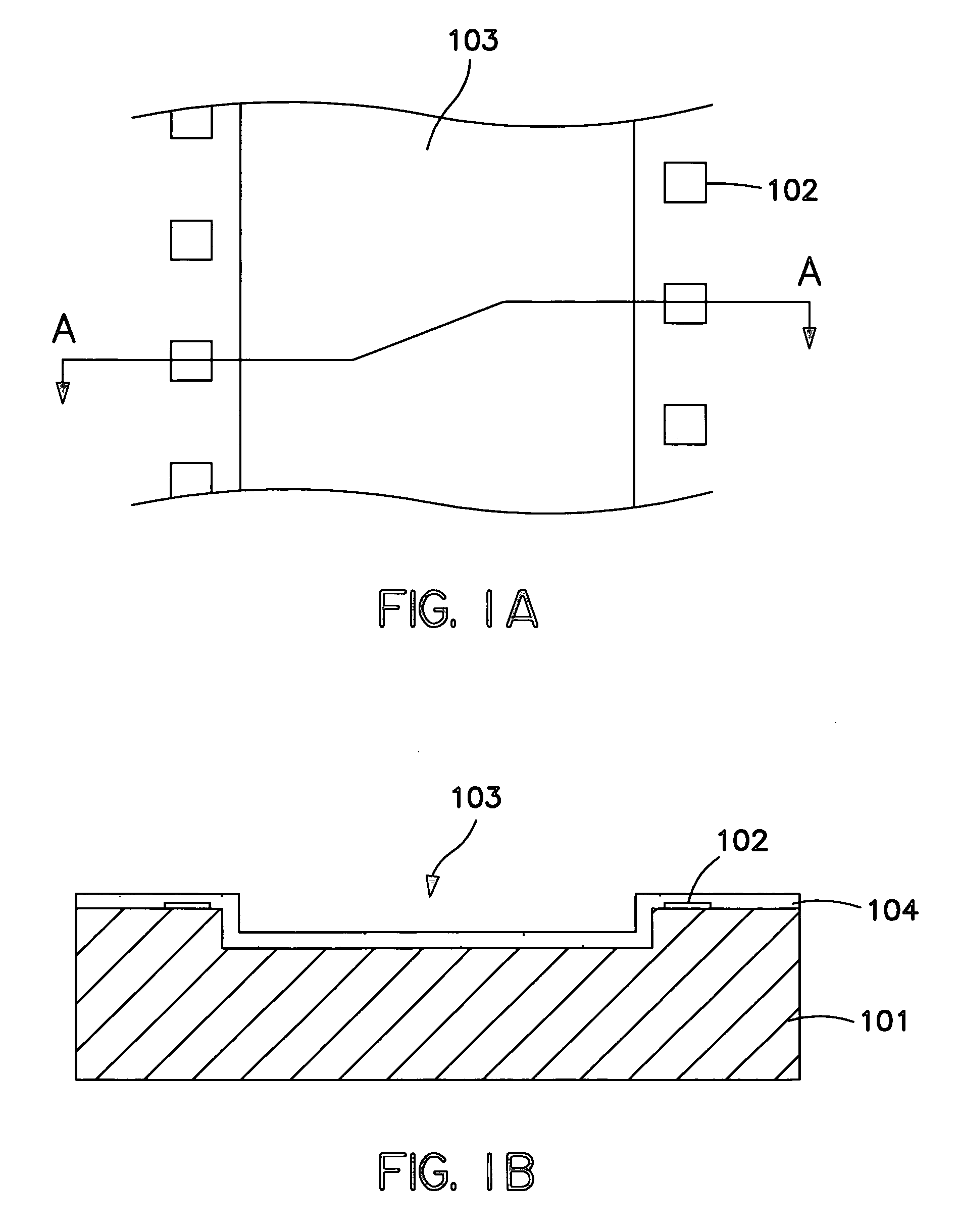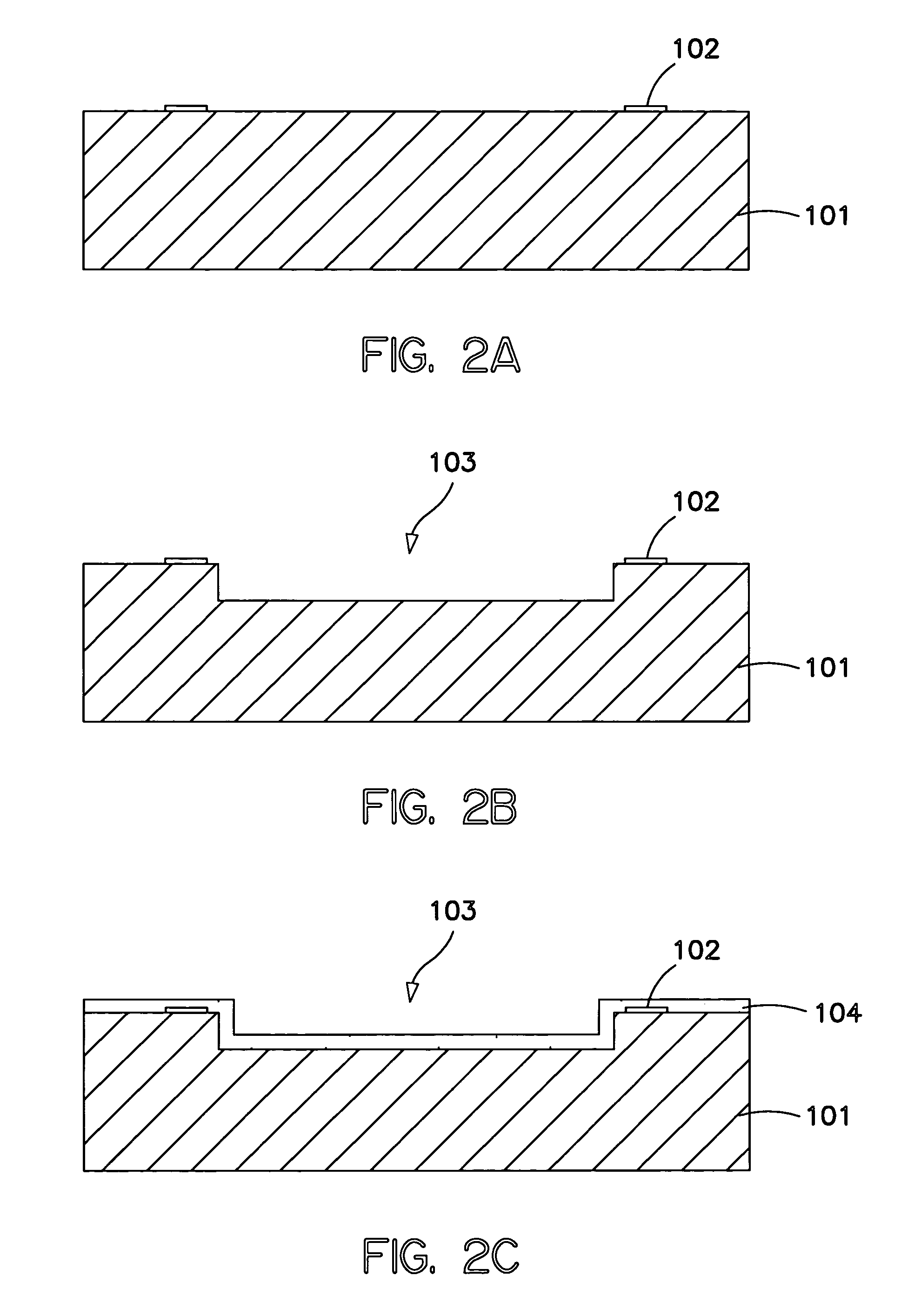Ink jet recording head, manufacturing method therefor, and substrate for ink jet recording head manufacture
- Summary
- Abstract
- Description
- Claims
- Application Information
AI Technical Summary
Benefits of technology
Problems solved by technology
Method used
Image
Examples
embodiment 1
[0072]Referring to FIGS. 1A–3D, the ink jet recording head manufacturing method in the first embodiment of the present invention will be described. FIGS. 2A–3D are schematic drawings of the ink jet recording head, sequentially showing the ink jet recording head manufacturing steps, and FIGS. 1A and 1B are schematic drawings of the ink jet recording head substrate which has been completed through the step shown in FIG. 2A to the step shown in FIG. 2C; FIG. 1A is a plan view thereof, and FIG. 1B is a sectional view thereof at the line A—A in FIG. 1A. Each of the drawings in FIGS. 2A–3D is a sectional view of the substrate at a line comparable to the line A—A in FIG. 1A.
[0073]Referring to FIG. 1A, the ink jet recording head manufactured using the ink jet recording head manufacturing method in this embodiment has a substrate 101 on which a plurality of ejection pressure generation elements 102 for generating the pressure for ejecting ink (liquid) were formed. The substrate 101 is provid...
embodiment 2
[0092]Next, referring to FIGS. 4A and 4B, the second embodiment of the present invention will be described. FIGS. 4A and 4B are schematic drawings of the ink jet recording head substrate in this embodiment, after the completion of the manufacturing steps from the first step to the step comparable to the step shown in FIG. 2C; FIG. 4A is a plan view thereof, and FIG. 4B is a sectional view thereof at the line A—A in FIG. 4A.
[0093]In this embodiment, the recess 203 is formed by an anisotropic etching method. With the use of this etching method, the lateral walls of the recess 203 become slanted. The ink jet recording head manufacturing steps in this embodiment other than the step for forming the recess 203 are the same as those in the first embodiment.
[0094]Therefore, the ink jet recording head manufactured with the use of the ink jet manufacturing method in this embodiment is virtually identical to that manufactured with the use of the method in the first embodiment, except that the ...
embodiment 3
[0097]Next, referring to FIGS. 5A–6B, the third embodiment of the present invention will be described. FIGS. 5A and 5B are schematic drawings of the ink jet recording head substrate in this embodiment, after the completion of the manufacturing steps from the first step to the step comparable to the step in the first embodiment shown in FIG. 2C; FIG. 5A is a plan view thereof, and FIG. 5B is a sectional view thereof at the line A—A in FIG. 5A. FIGS. 6A and 6B are schematic drawings of the completed ink jet recording head; FIG. 6A is a horizontal sectional view thereof, and FIG. 6B is a vertical sectional view thereof at the plane A—A in FIG. 6A.
[0098]Referring to FIG. 5A, the recess 303 in this embodiment has a plurality of rectangular appendages extending toward the ejection pressure generation elements, one for one. Thus, after the formation of the recess 303 in the obverse surface of the substrate, the remaining portion of the obverse surface of the substrate is shaped so that it ...
PUM
| Property | Measurement | Unit |
|---|---|---|
| Pressure | aaaaa | aaaaa |
| Photosensitivity | aaaaa | aaaaa |
| Anisotropy | aaaaa | aaaaa |
Abstract
Description
Claims
Application Information
 Login to View More
Login to View More - R&D
- Intellectual Property
- Life Sciences
- Materials
- Tech Scout
- Unparalleled Data Quality
- Higher Quality Content
- 60% Fewer Hallucinations
Browse by: Latest US Patents, China's latest patents, Technical Efficacy Thesaurus, Application Domain, Technology Topic, Popular Technical Reports.
© 2025 PatSnap. All rights reserved.Legal|Privacy policy|Modern Slavery Act Transparency Statement|Sitemap|About US| Contact US: help@patsnap.com



